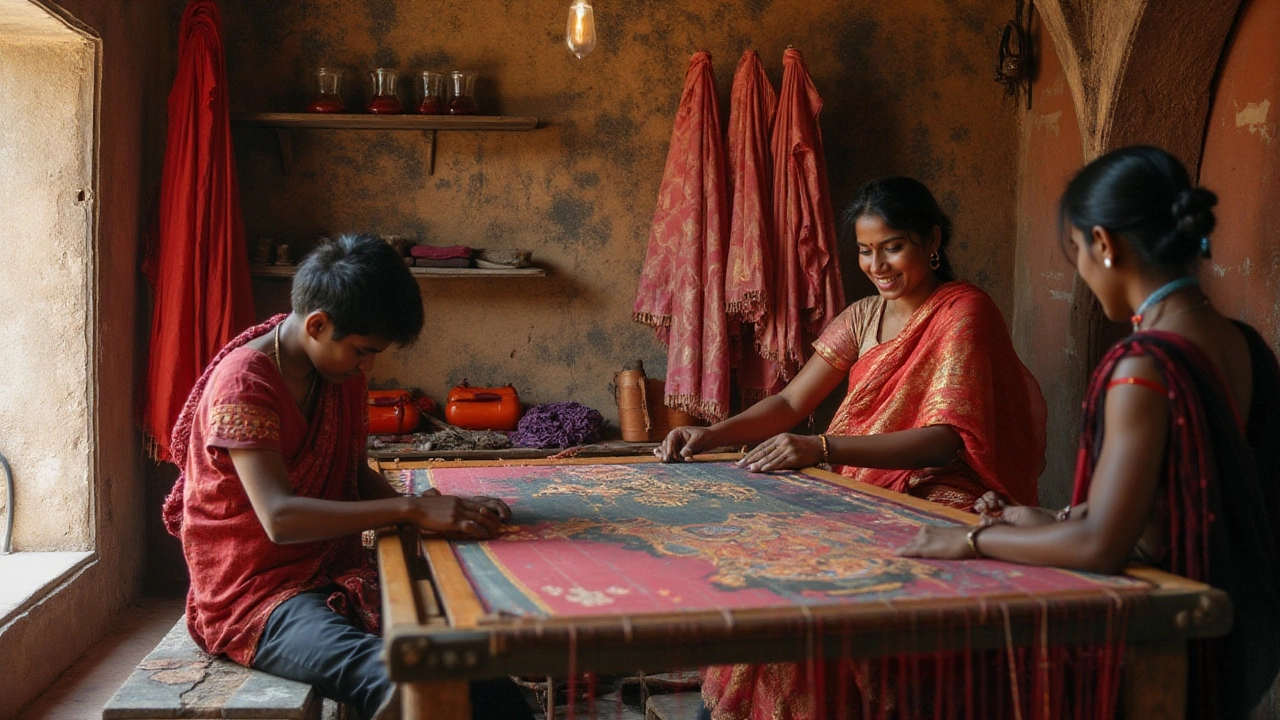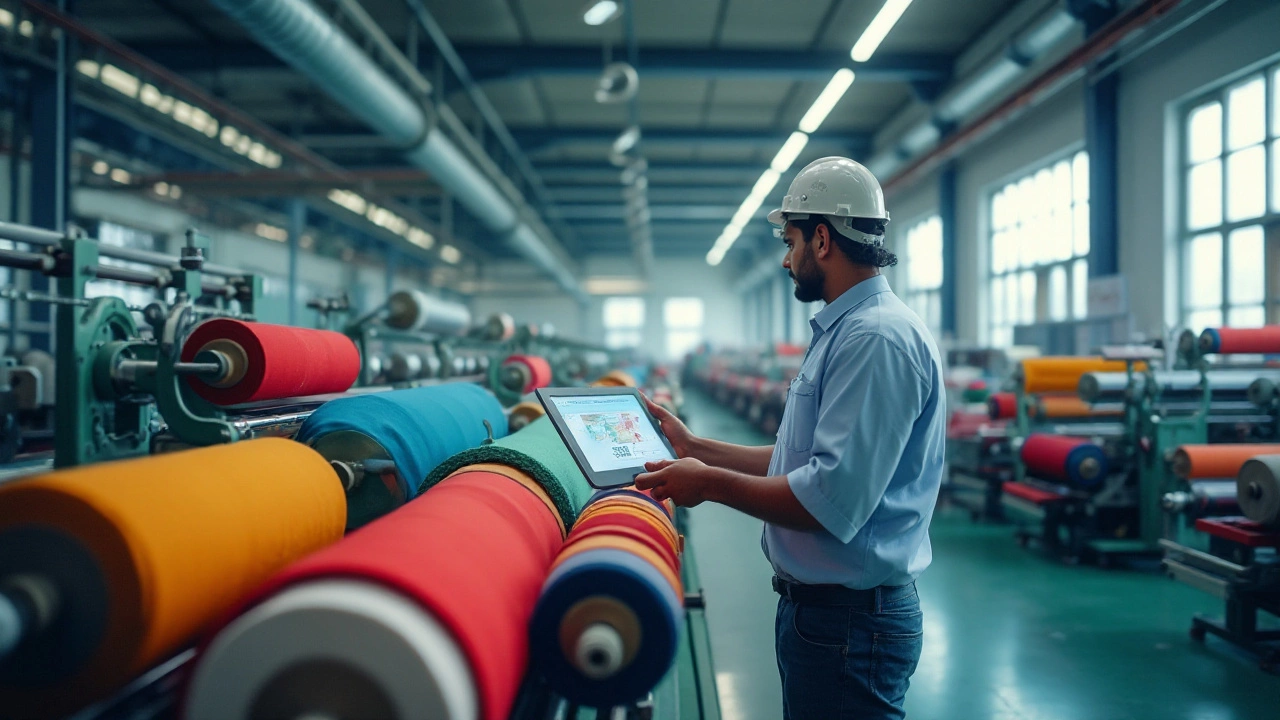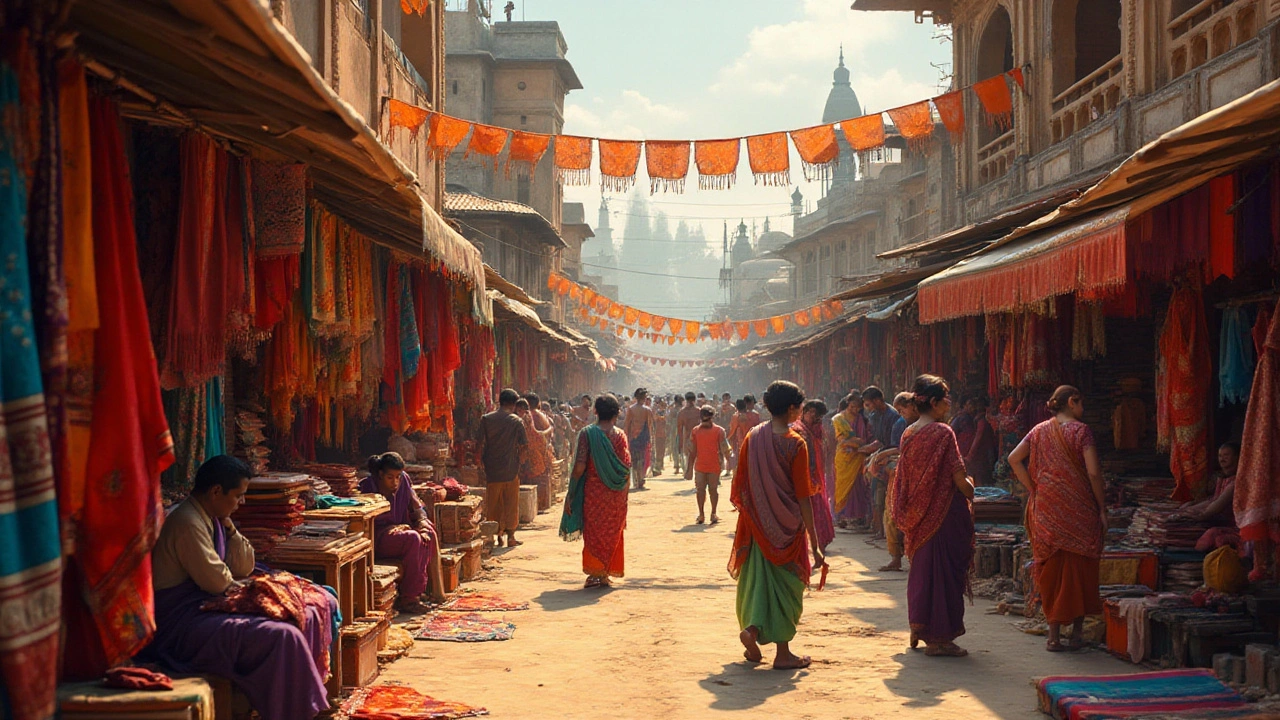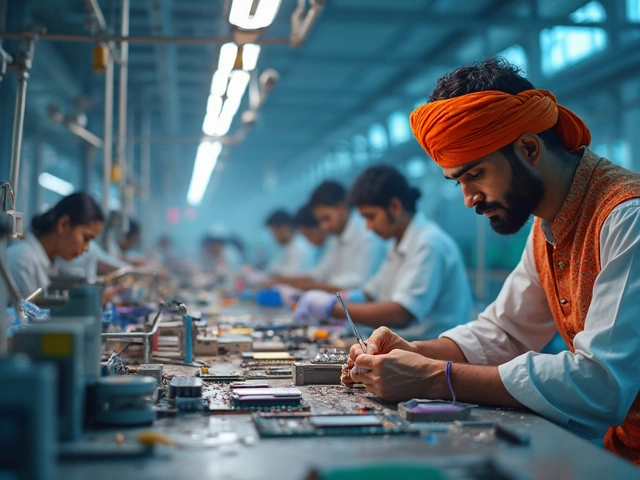India's textile industry is not just another sector; it's an integral part of the nation's fabric—quite literally. Spanning thousands of years, the rich history of textiles in India reflects the culture, identity, and economic prowess of the country. From the intricate weaves of Varanasi to the vibrant prints of Rajasthan, India offers a tapestry of colors and patterns like no other.
Today, India is not only staying rooted in its ancient textile traditions but is also leading the charge with modern technologies and innovations. Embroideries mix with digital presentations, and handlooms find companionship with high-tech machinery. This blend makes India unique in the global textile market.
However, being a leading textile nation doesn't come without hurdles. The industry is constantly navigating challenges posed by global competitors like China and Bangladesh. These countries, often with lower production costs, add a dynamic tension, pushing India to uphold quality, sustainability, and innovation.
Despite these challenges, there is a vision for the future. As 2025 unfolds, the textile scene in India continues to evolve, intertwining traditional craftsmanship with cutting-edge methods, ensuring that India stands tall as a textile powerhouse.
- A Rich Legacy: Historical Insights
- Modern Innovations and Techniques
- Challenges and Global Competition
- The Future of Indian Textiles
A Rich Legacy: Historical Insights
The story of Indian textiles is as colorful and diverse as the fabrics themselves, tracing back over 5,000 years. It all began with the discovery of cotton cultivation in the Indus Valley Civilization, one of the world's earliest urban cultures. The early artisans of this era set a precedent for India as a hub of high-quality textiles. Over the centuries, different regions developed specialized techniques, giving rise to the rich tapestry of regional diversity that India is renowned for today. Fabrics such as silk from Kanchipuram and pashmina from Kashmir became globally recognized and coveted commodities, illustrating India’s massive influence in the ancient world's textile industry.
When we explore the history of textiles in India, it is essential to consider the Mughal era, which was a golden period for the textile industry. The Mughals, with their love for luxury, brought about a revolution in the textile industry with their patronage of silk and velvet. Intricate techniques, such as zari (gold thread embroidery) and brocade weaving, flourished under their reign. This period was marked by the blend of Persian motifs with Indian craftsmanship, resulting in timeless pieces that are still cherished today.
The British colonial period altered the trajectory of India's textile journey significantly. While the colonial rulers imposed their own systems and exploited resources, this era saw the rise of resistance through the Swadeshi movement. Right under the nose of British rule, local artisans went back to their traditional roots, reviving handloom and khadi. Eminent leaders like Mahatma Gandhi endorsed the use of khadi not only as a symbol of nationalism but also as a socio-economic tool for self-reliance. This movement sparked renewed interest and pride in indigenous textiles, a legacy that continues to inspire contemporary textile practices.
The legendary French traveler Jean-Baptiste Tavernier once remarked on the fineness of Indian muslin, comparing it to "woven air" due to its sheer quality and delicate texture.
In more recent history, the post-independence era witnessed a renaissance in textiles as focus shifted to modernization and mechanization. However, Indian textile manufacturers have found a way to balance tradition and innovation. Institutions and designers today often draw on the country's vast textile heritage for inspiration, bringing age-old techniques to the contemporary market with a modern twist. For instance, the vibrant tie-dye techniques from Rajasthan and Gujarat have evolved into chic global fashion statements.
This historical foundation has positioned India prominently in the world of fabric production, making it a household name across continents. The narrative of India's textile saga is not just about cloth and fiber; it is a vivid portrayal of the country’s history, culture, and evolution over millennia. As consumers across the globe continue to seek authentic and sustainable options, India's century-old practices remain ever relevant, reinforcing its identity as a textile powerhouse.

Modern Innovations and Techniques
India's textile industry has taken giant strides in recent years, combining traditions with cutting-edge advancements. The fabric landscape is constantly evolving, showcasing innovations that revolutionize the way textiles are crafted and consumed. Interestingly, several manufacturers in India are weaving their way into the future by adopting smart textiles, which integrate electronics and fabrics to enhance functionality. This exciting development is reshaping how people perceive clothing and its potential uses.
The use of automation and robotics in the textile sector is now commonplace. High-tech machinery has entered the scene, enabling faster production without sacrificing quality. Machines capable of precision weaving, dyeing, and cutting are ensuring that consistency accompanies creativity. The exploration into sustainable practices is another major focus. Many textile manufacturers in India are recognizing the importance of eco-friendly techniques, such as using organic materials or recycling water in production. By employing energy-efficient processes, companies can reduce their carbon footprint effectively.
The digitization of the supply chain is another significant innovation. By integrating digital tools, manufacturers can track their resources and outputs in real time. This transparency not only boosts efficiency but also builds trust among international clients. Through digital platforms, collaborations have also become easier, connecting Indian manufacturers with designers across the globe. As an example of international recognition, a renowned CEO once stated,
"The synergy between tradition and technology in Indian textiles is nothing short of transformative, ushering in a new era of global fashion dynamics."
India is at the forefront when it comes to experimenting with textile blends. The fusion of unexpected materials, like metal filaments with traditional cotton or silk, provides not only durability but also aesthetic appeal. These hybrid fabrics are warmly receiving attention from architects, designers, and artists looking for unique textures. Moreover, innovations don't stop at materials—digital printing technology, which offers endless possibilities for patterns and designs, has caught the imagination of many. It's a game-changer, enabling India textiles to cater to bespoke requests worldwide.
A critical development that shouldn't go unnoticed is the focus on worker welfare through technology. By embracing wearable tech, factories can monitor the health and safety of their workers, ensuring a better working environment. Smart bands, for instance, track vital signs and environmental conditions in real-time, alerting management to introduce necessary measures. It's not just about innovating textiles but also investing in the people who make them.

Challenges and Global Competition
The Indian textile industry stands on a vibrant, albeit complex, landscape marked by both opportunities and hurdles. One of the significant challenges is the intense competition from other countries like China and Bangladesh. These nations have positioned themselves as giants in textile manufacturing due to their lower production and labor costs. India, known for its quality fabrics, faces the constant dilemma of maintaining competitive pricing without compromising on quality, which is often a tightrope walk for many textile manufacturers in India.
Adding to the economic strain are the erratic fluctuations in raw material prices, particularly cotton, which forms the backbone of Indian textiles. The country often experiences unpredictable price hikes due to monsoon variations and international market trends. This uncertainty makes it difficult for manufacturers to plan production costs effectively, impacting both local artisans and large-scale producers. The erratic pricing can ripple through the supply chain, challenging India's position in the ever-competitive global market.
Environmental regulations also pose challenges. The rise of eco-consciousness among consumers is leading major global brands to demand sustainable practices. While India is striving for sustainability, the transition requires substantial investment in cleaner technologies and green certifications, which not all manufacturers can afford. The push for eco-friendly textiles creates a dual challenge: to enhance sustainable practices while remaining cost-effective in a market dominated by price-sensitive consumers.
The technological gap is another hurdle. Many Indian textile companies, while rich in craftsmanship, lag in adopting the latest manufacturing technologies compared to their Western counterparts. This technology gap can affect production speed, efficiency, and innovation in textile designs. Modern innovations, though embraced by some, still require widespread adoption and governmental support to uplift the industry.
Despite these challenges, India is making strides. Initiatives like 'Make in India' and various export incentives aim to boost the sector, positioning the country as a significant player in the global scene. In an interesting statement, the International Textile Manufacturers Federation noted:
The continued resilience and adaptability of India's textile sector amid global pressures shows its foundational strength in shaping the industry.With governmental policy support and increasing focus on innovation, the Indian textile industry is preparing to meet and overcome these challenges with renewed vigor. Embracing a balance of traditional craftsmanship and modern methodologies, India strives to maintain its rightful place as a textile leader in the global arena.

The Future of Indian Textiles
As we dive into what lies ahead for India's textile industry, it's essential to recognize not just where it stands today, but where it is poised to go. The landscape is vibrant, full of potential, and brimming with opportunities. The world is watching as India seamlessly weaves its traditions into modern-day practices. But what does the future truly hold for a nation synonymous with lavish fabrics and intricate designs?
Looking forward, sustainability is becoming a buzzword in the industry. Indian manufacturers are increasingly aware of the global demand for eco-friendly practices. Among the many methods adopted are water-saving dyeing techniques, organic fibers, and zero-waste policies. This shift isn't just about improving the environment; it's about maintaining a competitive edge. More brands globally are opting for sustainable partners, which makes India's commitment to green textiles not just preferable, but necessary.
Another major shift is in technology integration. Smart textiles, which include fabrics embedded with sensors, are gaining traction. This high-tech evolution is opening doors to innovative applications in various fields. Everything from athletic wear that monitors biometric stats to furniture with integrated climate control is part of this fabric revolution. The infusion of technology with traditional textiles marks an exciting chapter for India's textile industry, setting a precedent for future innovations.
Adding to future prospects is the idea of textile clusters. In states like Tamil Nadu and Gujarat, specialized zones are being created to foster collaborative environments. These clusters aim to concentrate resources, drive innovation, and improve efficiencies in production. The clusters also enable smaller players to access markets that were previously unreachable. Encouraging regional specialization in textile production could be one of India's strategies to amplify its already-substantial presence on the global stage.
On a broader scale, India's government continues to play a significant role. The newly introduced 'National Textile Policy 2025' is tailored to boost the sector. With goals like increasing export targets and introducing new infrastructure, the government is laying down a framework that promises growth. As quoted by the Union Minister for Textiles recently, "Our vision is to make India a leader in both quality and quantity. We are committed to supporting traditional crafts while fostering innovation."
Despite these aspirations, challenges persist, particularly when it comes to labor. The need for skill development in this rapidly advancing industry is crucial. Agencies are being established to focus on training programs that equip the workforce with the latest skills needed. By 2025, the goal is to transform the workforce into a well-oiled machine, capable of driving this industry forward and meeting the demands of an ever-evolving market.
Lastly, the shift in consumer behavior, especially among the younger demographics, is introducing a new dynamic. With social media exploding, fashion is traveling at the speed of a click. Younger consumers demand distinct, ethically-produced, and trendy garments. Indian textile manufacturers are responding to these demands, embracing versatility while ensuring that they stay at the forefront of global fashion trends. The synergy between digital influence and textile production is another exciting frontier shaping India's future in textiles.






